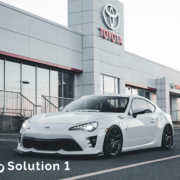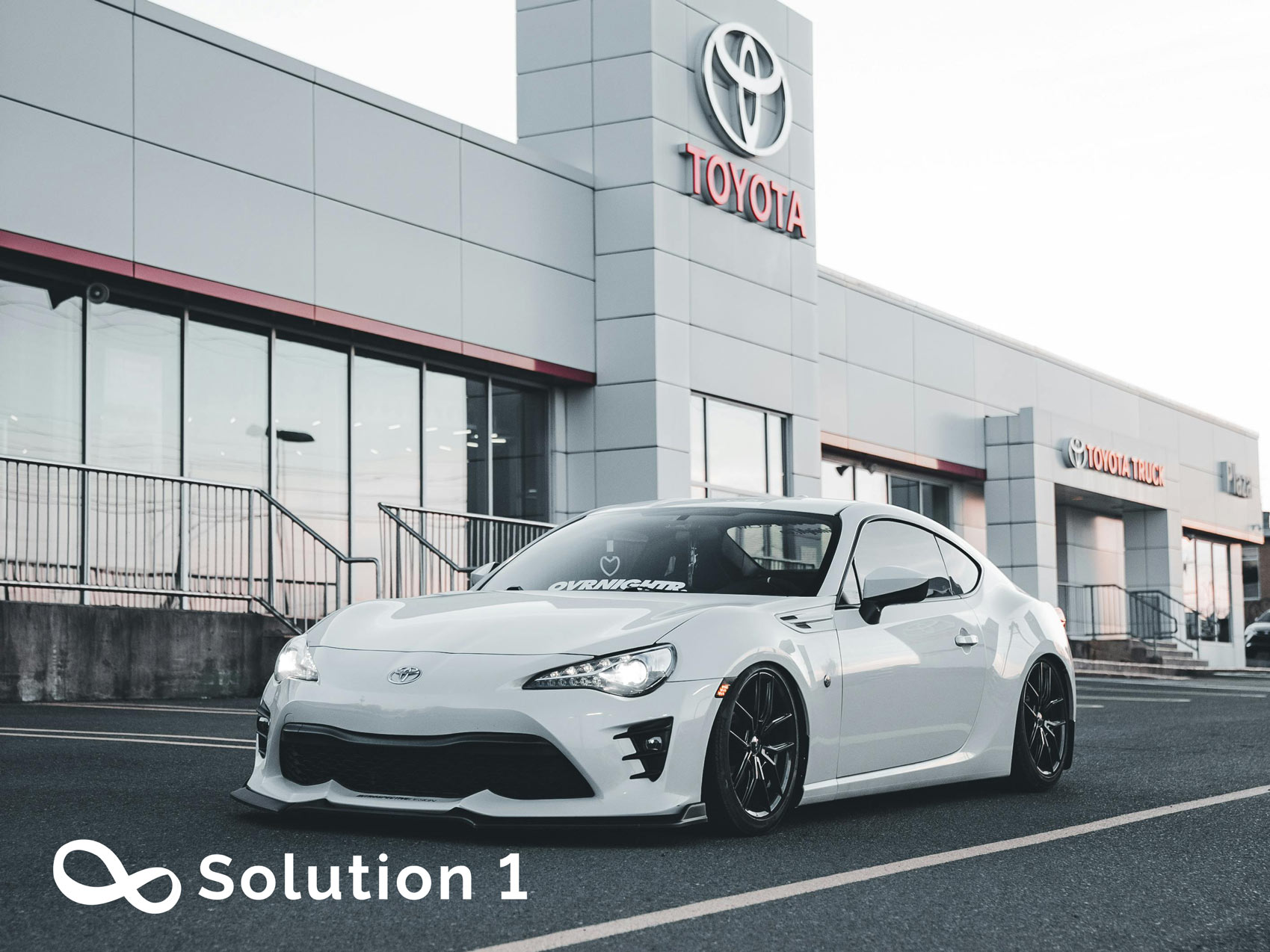How Japanese Carmakers Are Responding to a 25 % Tariff Shock: Supply-Chain Re-engineering and Strategic Pivots
The United States’ decision to slap a 25 percent tariff on Japanese-made vehicles and parts has rocked the country’s auto sector. For Toyota, Nissan, Honda, Mazda, and Subaru—brands that have cultivated the US market for decades—the levy lands like a body blow. America is Japan’s largest auto-export destination, accounting for roughly one-third of all Japanese vehicle exports.
- Financial impact: earnings revisions and guidance cuts
The punitive duty, effectively an overnight surcharge, squeezes margins and shatters once-bullish North American forecasts. Analysts estimate the five biggest Japanese carmakers now face an extra annual bill of about ¥3.6 trillion (US$ 25 billion); Toyota alone could shoulder nearly half of that.
Toyota expects operating profit for the current fiscal year (FY 2025) to fall 21 percent, from ¥4.8 trillion to ¥3.8 trillion. The company says the tariff inflicted about ¥180 billion (US$1.25 billion) in direct costs in April and May. CEO Koji Sato concedes that vague US policy details cloud future planning. A brief, pre-tariff buying rush lifted March sales, yet the industry fears higher prices will soon chill demand. For now, Toyota is holding prices steady while it watches the situation.
Honda forecasts its profit to plunge roughly 70 percent this year. CEO Toshihiro Mibe cites a slower-than-expected US EV market, plus tariff uncertainty. Honda has withdrawn its plan for EVs to reach 30 percent of global sales by 2030, trimming its electrification budget for the decade from ¥10 trillion to ¥7 trillion and shifting its near-term US focus to hybrids. Before the tariff took effect, Honda also bulked up US inventory to soften the initial blow. Even so, profit for the year ended March 2025 fell 24.5 percent to ¥835.8 billion.
Nissan, the most export-dependent of the group, is in the direst straits. Already mired in restructuring, it booked a ¥670.9 billion (US$ $4.5 billion) net loss for FY 2024, its worst in 25 years, and has withheld profit guidance for FY 2025. The firm will close seven plants and cut 20,000 jobs worldwide by 2027. Tariff pain shows in its export mix: in 2024, Nissan shipped 327,000 vehicles from Mexico to the US, more than any rival, including 180,000 Sentras priced just above US$20,000. With little room to raise prices, Goldman Sachs reckons Nissan’s operating profit could dive 56 percent this year, second only to Mazda’s projected 59 percent fall.
Subaru and Mazda have likewise suspended FY 2025 outlooks, blaming tariff uncertainty. Subaru warns that the duty could slice as much as US$ $2.5 billion from earnings, most of its profit, while Mazda cautions that US volumes may slip as prices rise. Goldman Sachs expects Toyota’s and Honda’s profits to fall a more modest 6 percent and 8 percent, respectively, thanks to their larger North American manufacturing footprints.
Across the board, Japanese automakers are slashing costs, postponing investment, and sometimes withdrawing guidance to stabilize their balance sheets.
- Supply-chain overhaul and a new North American footprint
Executives know they can only offset the tariff’s cost surge by redesigning global supply lines and production networks. The task is Herculean. More than half of all Japanese-brand vehicles sold in the US are already built there—a legacy of the 1980s trade wars—and plants in Canada and Mexico were added later to leverage USMCA benefits. Yet the new duty hits all imports, even those from Canada and Mexico unless vehicles meet stringent regional-content rules. Any U.S.-bound car containing Japan-made parts is now exposed.
Toyota is studying ways to raise output at its US plants and shift some Japan-built models to North American lines. The Tacoma pickup, assembled in Mexico with a high US parts share, already enjoys a cost buffer.
Subaru, which sells roughly half its cars in America, says, “There is no choice but to expand U.S. production.” Its Indiana plant is nearly complete, so adding capacity would require a significant investment.
Mazda looks prescient. The joint Mazda-Toyota factory in Alabama, launched to build the CX-50 and Corolla Cross, now shields those hot-selling SUVs from duty. Commentators call the decision a masterstroke.
The long-favored “Mexico bridgehead” strategy—produce cheaply in Mexico and export to the US—is being reassessed. Honda will shift some CR-V output from Ontario to Ohio, and its hybrid Civic, once slated for Mexico in 2027, will instead start life in Indiana in 2028. Nissan will likely reduce Mexican exports, assigning more models to Tennessee and Mississippi to avoid tariffs on price-sensitive buyers.
Buildings in America are expensive: UBS estimates labor and construction outlay to be at least 30 percent higher than in Mexico or Japan. Complete relocation cannot happen overnight; Frost & Sullivan warns that rewiring such a complex supply web takes years.
To cope, carmakers are Maximizing existing North American capacity while fast-tracking local sourcing to raise regional content ratios and cut costly imports.
- EV investment slowed or was redirected.
High tariffs, thinner cash flows, and a cooling US EV market force Japanese brands to pace their electrification plans.
Honda has paused a US$15 billion EV-and-battery build-out in Ontario pending clearer policy signals; existing ICE plants will keep running flat out.
Subaru is reviewing its EV roadmap to concentrate scarce capital on profitable US hybrids.
Toyota is reconsidering its goal of selling 1.5 million EVs globally in 2026.
Nissan has frozen plans for a new battery plant in Japan while it fights
to achieve profitability.
Executives insist the long-term EV shift remains intact; the timetable, not the destination, is being tweaked until the trade outlook steadies.
- Japan-US bargaining: balancing market access and home-front promises
Labeling the tariff a “national crisis for an export-driven country,” Prime Minister Shigeru Ishiba has launched an all-out diplomatic push. Talks opened in April and could culminate in a deal when G7 leaders meet in June.
Tokyo’s toolkit mixes concessions and leverage:
- Buying more US goods. Japan is ready to step up imports of American corn, soybeans, and even rice, offsetting US losses in China and shrinking the trade gap that vexes Washington.
- Easing non-tariff barriers. Japan has offered to streamline certification so that US cars built to American standards can more easily enter its market.
- Strategic cooperation. Signals of greater defense spending and help for US shipbuilding widen the bargaining field beyond autos.
- Interim relief. Japan has already secured a two-year credit for U.S.-built vehicles; automakers may reclaim tariff amounts equal to 15 percent of MSRP in year one and 10 percent in year two. Tokyo wants that cushion extended or the duty cut to 10 percent while talks continue.
Domestically, almost 40 percent of prefectures have rolled out cheap loan schemes—Tottori offers up to ¥3 billion—to help suppliers. Over 90 percent have set up advisory desks for finance and export diversification to prevent an exodus of capacity.
Tokyo stresses that quick tariff removal serves both nations: disrupted supply chains hurt US dealers, retail jobs, and consumers, too. That argument is gaining traction among American importers and retailers worried about soaring prices.
Japan’s goal is clear: to keep US market access without hollowing out its domestic industry. Whatever the outcome, the lesson is plain. To survive an era of rising protectionism, Japanese carmakers must build more resilient, diversified supply chains and reduce reliance on any single market or policy regime. That costly and painstaking adjustment may well become the industry’s new regular.





